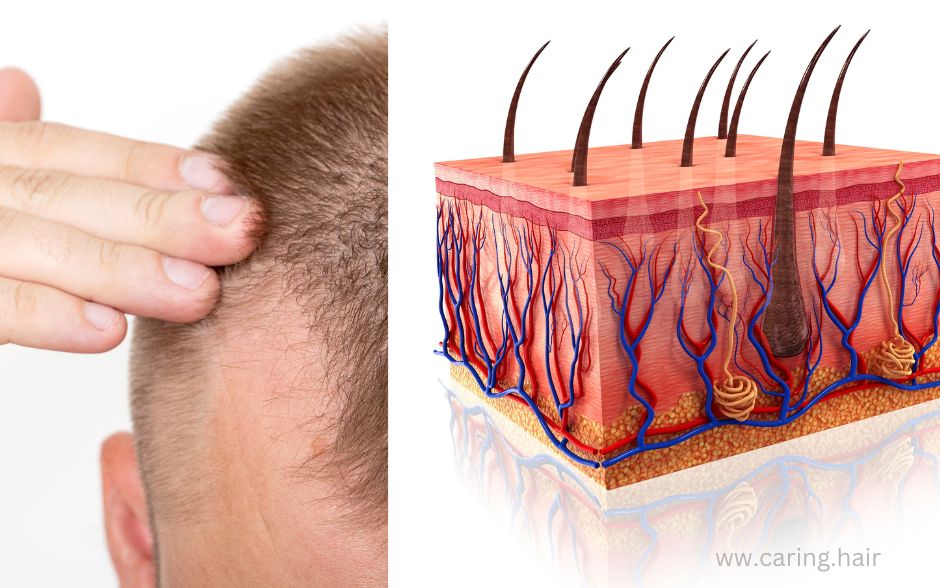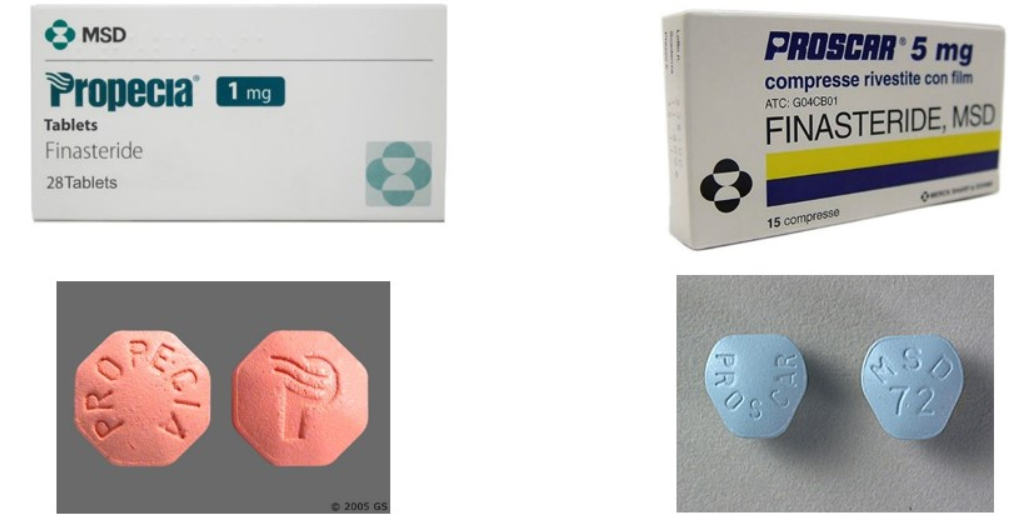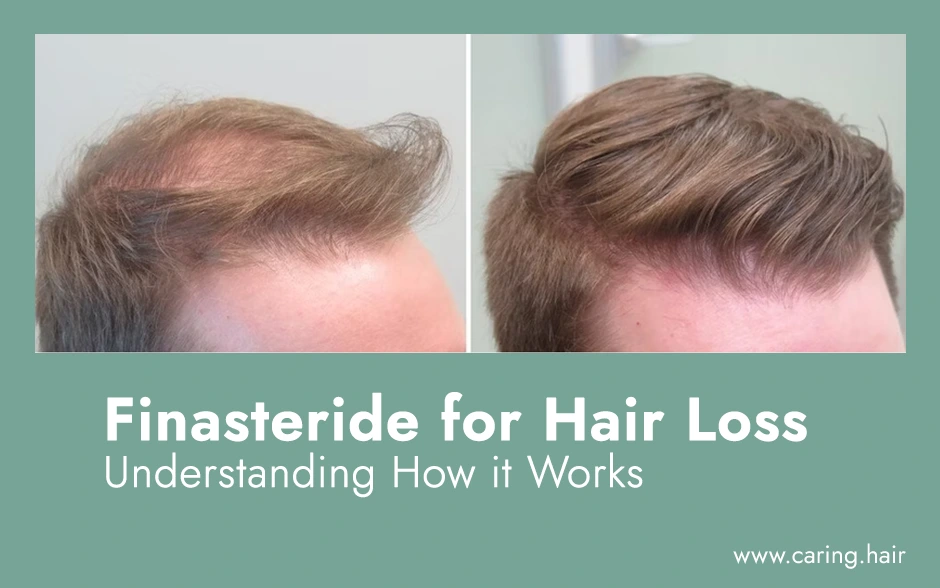We understand that hair loss can be a frustrating and stressful experience for many men. That’s why we’re here to provide comprehensive information on finasteride, a medication that has been proven to effectively treat hair loss in men.
If you’re considering finasteride as a treatment for hair loss, it’s important to understand its benefits and potential side effects. In this article, we’ll provide you with all the information you need to make an informed decision about using finasteride.
Overview of finasteride as a treatment option
Finasteride is a medication that has been approved by the FDA for the treatment of male pattern hair loss. It is a type of drug called a 5-alpha-reductase inhibitor, which means it works by blocking the conversion of testosterone to dihydrotestosterone (DHT). DHT is a hormone that is responsible for the miniaturization of hair follicles in individuals with male pattern hair loss.
How Finasteride Works

A. Overview of DHT and hair loss
DHT is a hormone that is produced by the conversion of testosterone by the enzyme 5-alpha reductase. DHT is responsible for the development of male sex characteristics, such as body hair and a deep voice. However, in men with a genetic predisposition to hair loss, DHT can also cause hair follicles to shrink and produce thinner, shorter hair. Over time, the hair follicles may become completely inactive, leading to baldness.
B. Mechanism of action of finasteride
Finasteride works by inhibiting the enzyme 5-alpha reductase, which is responsible for converting testosterone to DHT. By blocking the conversion of testosterone to DHT, finasteride can reduce the levels of DHT in the scalp, which can help to slow down or even reverse hair loss in men with male pattern baldness.
C. Clinical studies on the effectiveness of finasteride
Multiple clinical studies have shown that finasteride is effective in reducing hair loss and promoting hair growth in men with male pattern baldness. For example, a study published in the Journal of the American Academy of Dermatology found that 83% of men who took finasteride for 2 years experienced some improvement in hair growth, compared to 28% of men who took a placebo. Another study published in the Journal of Investigative Dermatology found that finasteride improved hair growth and increased hair count in men with mild to moderate hair loss.
Overall, the evidence suggests that finasteride is an effective treatment for hair loss in men with male pattern baldness. However, it is important to note that the effectiveness of finasteride may vary depending on the individual and the severity of their hair loss.
Dosage and Administration
A. Recommended dosages
The recommended dose of finasteride for the treatment of hair loss in men is 1 mg per day. This is the same dose that is used to treat benign prostatic hyperplasia (BPH), a condition that also involves an enlarged prostate gland.
B. How to take finasteride
Finasteride is taken orally, usually once per day. It can be taken with or without food, but should be taken at the same time each day to maintain a consistent level of the medication in the body. It is important to follow the instructions provided by your healthcare provider or the medication label when taking finasteride.
C. Possible side effects of finasteride
Like all medications, finasteride may cause side effects in some individuals. The most common side effects of finasteride include decreased sex drive, erectile dysfunction, and decreased semen volume. These side effects usually go away once the medication is stopped. However, in rare cases, finasteride may cause persistent sexual side effects that continue even after the medication is discontinued. Other potential side effects of finasteride include breast tenderness or enlargement, rash, and allergic reactions.
If you experience any side effects while taking finasteride, it is important to talk to your healthcare provider. They may be able to adjust your dose or recommend other treatments to help manage your symptoms.
Benefits and Risks of Finasteride
A. Benefits of finasteride
The primary benefit of finasteride is its ability to slow down or even reverse hair loss in men with male pattern baldness. Clinical studies have shown that finasteride can improve hair growth and increase hair count in men with mild to moderate hair loss. In addition, finasteride is a convenient treatment option, as it is taken orally and only needs to be taken once per day.
- It is an effective treatment for male pattern baldness
- It can help to prevent further hair loss
- It can stimulate the growth of new hair
- It is an FDA-approved medication for hair loss
- It is safe and well-tolerated by most men
B. Risks of finasteride
While finasteride is generally considered safe and effective, it may cause side effects in some individuals. As discussed earlier, the most common side effects of finasteride include decreased sex drive, erectile dysfunction, and decreased semen volume. In rare cases, finasteride may also cause persistent sexual side effects that continue even after the medication is discontinued.
In addition, there have been concerns about the potential long-term risks of finasteride, particularly in relation to prostate cancer. Some studies have suggested that finasteride may increase the risk of developing high-grade prostate cancer, although other studies have not found a significant association between finasteride and prostate cancer. It is important to talk to your healthcare provider about the risks and benefits of finasteride before starting treatment.
- Decreased libido
- Erectile dysfunction
- Decreased semen volume
- Breast tenderness or enlargement
C. Other considerations
Finasteride is not recommended for use in women, particularly pregnant women, as it can cause birth defects in male fetuses. Women who are pregnant or may become pregnant should not handle crushed or broken finasteride tablets.
In addition, finasteride may interfere with certain laboratory tests, including tests for prostate-specific antigen (PSA) levels. If you are taking finasteride, it is important to let your healthcare provider know before undergoing any laboratory tests.
Overall, while finasteride is generally considered safe and effective for the treatment of hair loss in men, it is important to weigh the potential risks and benefits before starting treatment.
Before and After results of Finasteride
Here are some before and after images of patients who have achieved results using Finasteride.
Brands of Finasteride

Finasteride is available under several brand names, including Propecia, Proscar, and Finpecia. Propecia and Proscar are both FDA-approved for the treatment of male pattern baldness and BPH, respectively. Finpecia is a generic version of finasteride that is available in some countries.
Forms of Finasteride
Finasteride is available in several different forms, including tablets and topical formulations. The most common form of finasteride is the tablet form, which is taken orally once per day. However, some companies have developed topical formulations of finasteride, including foams and sprays, which can be applied directly to the scalp.
Topical finasteride may have some advantages over oral finasteride, as it can potentially reduce the risk of systemic side effects such as decreased sex drive and erectile dysfunction. However, more research is needed to determine the safety and efficacy of topical finasteride for the treatment of hair loss.
Combination used with Finasteride
Finasteride can be used in combination with other treatments for hair loss to potentially increase the effectiveness of the overall treatment regimen. Some common treatments that are used in combination with finasteride include:
Finasteride can be used in combination with other treatments for hair loss to potentially increase the effectiveness of the overall treatment regimen. Some common treatments that are used in combination with finasteride include:
Minoxidil: Minoxidil is a topical medication that is applied directly to the scalp to promote hair growth. It works by increasing blood flow to the hair follicles and stimulating hair growth. Minoxidil is available over-the-counter in strengths ranging from 2% to 5%. Combining minoxidil with finasteride can potentially improve hair growth and reduce hair loss.
Low-level laser therapy (LLLT): LLLT is a non-invasive treatment that uses low-level laser light to stimulate hair growth. It is thought to work by increasing blood flow to the scalp and promoting the growth of new hair follicles. LLLT devices are available for home use and can be used in combination with finasteride to potentially increase the effectiveness of hair loss treatment.
Hair transplant surgery: Hair transplant surgery involves removing hair follicles from one area of the scalp (usually the back of the head) and transplanting them to areas of the scalp where hair is thinning or balding. Hair transplant surgery can be used in combination with finasteride to provide more comprehensive hair loss treatment.
FAQ about Finesteride
What is finasteride and how does it work for hair loss?
Finasteride is a medication that is used to treat hair loss in men with male pattern baldness. It works by inhibiting the enzyme 5-alpha reductase, which reduces the levels of DHT in the scalp. DHT is a hormone that is thought to contribute to hair loss in men.
Is finasteride safe for the treatment of hair loss?
Finasteride is generally considered safe for the treatment of hair loss, but it may cause side effects in some individuals. The most common side effects of finasteride include decreased sex drive, erectile dysfunction, and decreased semen volume. In rare cases, finasteride may also cause persistent sexual side effects that continue even after the medication is discontinued.
How long does it take to see results from finasteride for hair loss?
It may take several months to see noticeable results from finasteride for hair loss. Clinical studies have shown that it can take up to six months to see significant improvements in hair growth and hair count.
Can finasteride be used in combination with other treatments for hair loss?
Yes, finasteride can be used in combination with other treatments for hair loss to potentially increase the effectiveness of the overall treatment regimen. Common treatments that are used in combination with finasteride include minoxidil, low-level laser therapy (LLLT), and hair transplant surgery.
Do I need a prescription for finasteride?
Yes, finasteride is a prescription medication that must be prescribed by a healthcare provider. It is important to talk to your healthcare provider to determine if finasteride is right for you and to obtain a prescription if needed.
Can women use finasteride for hair loss?
Finasteride is not FDA-approved for the treatment of hair loss in women and should not be used by women who are pregnant or may become pregnant. Women who are experiencing hair loss should talk to their healthcare provider about alternative treatment options.
Is finasteride effective for all types of hair loss?
Finasteride is most effective for the treatment of male pattern baldness, which is the most common form of hair loss in men. It may not be as effective for other types of hair loss, such as alopecia areata or hair loss caused by medication or medical conditions.
